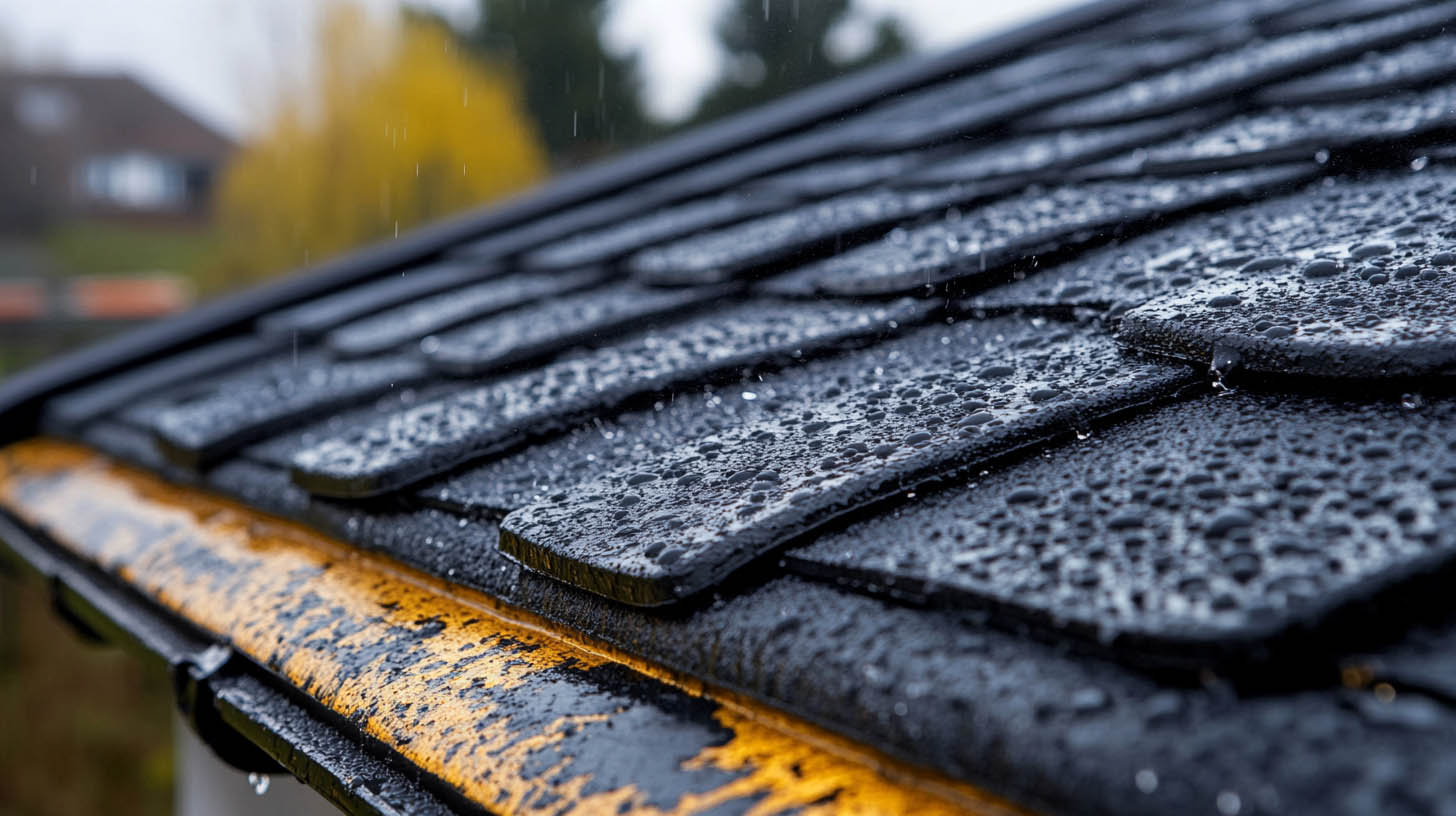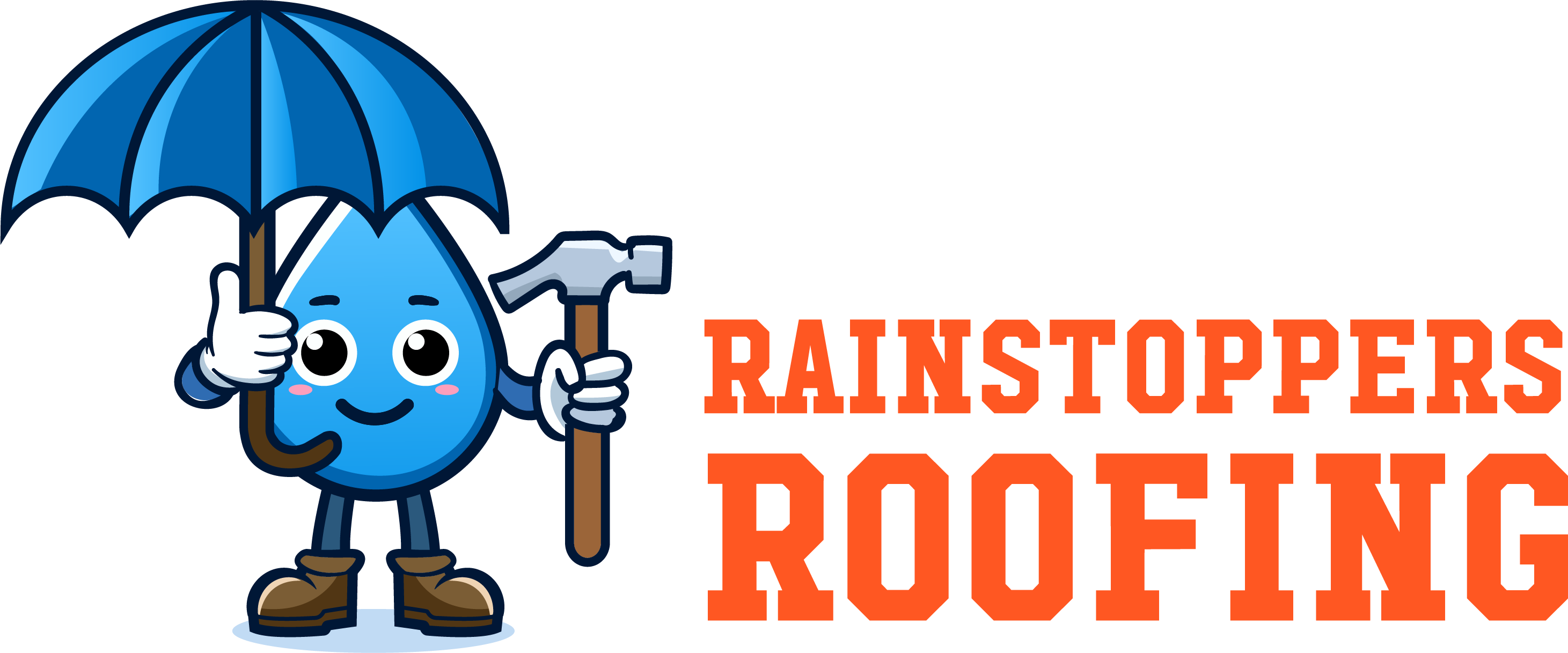
Rainstoppers Roofing, a trusted roofing provider in Charleston, WV, understands the importance of a well-maintained, waterproofed roof for the safety and longevity of your home. A waterproof roof prevents leaks, mold, and structural damage, protecting your property investment. Here are 12 key signs that your roof might be in urgent need of waterproofing.
1. Ceiling Stains or Wall Discoloration
Water stains on the ceiling or walls often appear as yellow or brown circles or streaks and are one of the first signs of a potential leak. These stains are often due to water seeping through an unprotected roof layer, leading to interior damage and the need for immediate waterproofing.
2. Mold and Mildew Growth
Mold and mildew thrive in moist environments and are commonly found in homes with leaky roofs. Besides being unsightly, they can release spores that trigger allergies and respiratory issues. When mold begins to grow, it signals that water is permeating your roof and points to a need for enhanced waterproofing.
3. Peeling Paint or Wallpaper
Peeling paint or wallpaper near ceilings or walls may indicate a roof leak. Water leaks compromise the bond between paint and wall surfaces, leading to peeling, bubbling, or even wall deterioration. Waterproofing your roof helps prevent future damage to both exterior and interior finishes.
4. Water Drips or Interior Puddles
Visible water drips or puddles inside the home are clear indicators of a compromised roof. If you notice water pooling in places, particularly during rainstorms, it’s a sign that your roof lacks effective waterproofing and needs urgent attention.
5. Sagging Roof Sections
Sagging roof areas suggest prolonged water infiltration, which weakens the structural integrity of your roofing system. This could be due to water-soaked insulation, decaying rafters, or pooling water on a flat roof. Immediate waterproofing measures can reinforce these areas before they worsen.
6. Moss and Algae Accumulation
While some moss may be harmless, large patches of moss or algae trap moisture on the roof, leading to decay and leaks. Waterproofing protects against moisture retention and delays the growth of these invasive organisms.
7. Increased Energy Bills
Poor roof waterproofing can lead to increased heating and cooling costs, as water exposure reduces your home’s insulation efficiency. Waterproofing not only safeguards your roof but also boosts energy efficiency by maintaining a dry and insulated roof deck.
8. Roofing Material Damage
Cracked, curling, or missing shingles allow water to penetrate the underlying layers of your roof. Damaged shingles often indicate weakened waterproofing that needs repair or reinforcement to maintain a dry interior.
Unique Fact: A 2022 survey showed that roof leaks were the cause of over 40% of insurance claims related to home water damage.
9. Roof Membrane Issues
Roofs with membranes, common on flat roofs, can experience tears, cracks, or bubbles over time. These defects allow water to seep in and necessitate prompt waterproofing. Regular inspections of membrane roofs can detect small issues before they cause major water damage.
10. Clogged Gutters
Blocked gutters lead to water pooling on the roof instead of being directed away, leading to water ingress and leaks. Clearing gutters regularly can prevent unnecessary strain on your roof’s waterproofing and ensure efficient water flow.
11. Flashing Damage
Flashing around chimneys, vents, and skylights seals off these areas from water. However, when flashing becomes damaged, it allows water to enter vulnerable roof areas. Inspecting and waterproofing flashing sections can prevent further issues and protect these high-risk areas.
12. Visible Roof Deformation
If your roof shows visible warping or deformation, it likely has severe water damage. Deformed roofs signal underlying damage to roof layers, which weakens structural integrity. Waterproofing can help manage this and preserve your roof’s structure.
Regular Maintenance and Expert Waterproofing Solutions
Roof waterproofing isn’t only essential when signs of water damage appear. Proactive maintenance helps prevent small issues from growing into costly repairs. Regular waterproofing treatments enhance durability, energy efficiency, and overall property value.
FAQs
1. How often should my roof be waterproofed?
Roof waterproofing is generally recommended every 5-10 years, depending on your climate and roof material.
2. Can I waterproof my roof myself?
While minor maintenance can be done yourself, professional waterproofing ensures thorough protection and longevity.
3. What type of roof needs the most waterproofing?
Flat roofs often require more frequent waterproofing due to pooling risks and limited drainage options.
4. How long does waterproofing last?
High-quality waterproofing treatments last around 5-10 years but depend on exposure to weather and climate.To learn more about why you shouldn’t add a second layer of shingles, click here.
